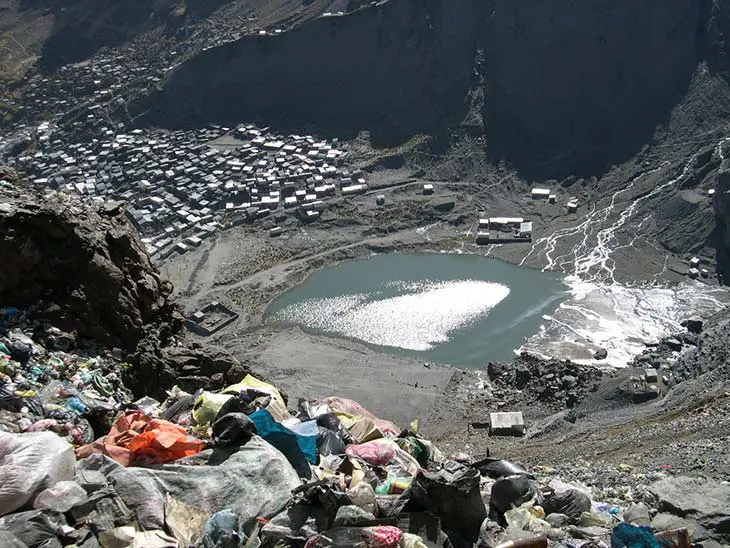La Rinconada, Peru, is the highest elevated human habitation on earth at 16,732 feet above sea level (5,100 meters). The city has no trees and sits on the edge of a glacier. The city has swelled to over 60,000 people and was never supposed to be this large if it were not for one thing — it has a productive gold mine.
The mining company that operates it is Corporacion Ananea, the only company with a legal government license. The company uses about 350 subcontractors to get the gold, and these subcontractors use what they call the “cachorreo system” to pay the workers. They refer to it as an “informal” system, but if you read between the lines, it is, in fact, illegal.
Under this system, miners work for 30 days without pay. On the 31st day, they are allowed to take as much ore as they can carry on their shoulders. It’s just a guess if there is any gold in the ore the workers carry home, and even for those that find gold, it’s a minuscule amount.
The damage done by the mine on the town is apparent, and the Peruvian government nor the mining company have plans to fix it. The government of Peru has said they want the miners to do their mining legally, but the miners are resistant because they feel they won’t earn enough from doing so. It would be an impossibility anyway since the government has only six people to check on an estimated 80,000 miners throughout the southeastern region of Peru.

The 3.17 mile-high city (5.1 km) has also become an environmental catastrophe and dangerous for anyone who tries to make a living there. Mercury is used in a process called amalgamation, where crushed ore is used with mercury to allow gold particles to mix with mercury and form an amalgam of gold and mercury together. That compound is then heated, vaporizing the mercury and leaving the gold behind.
It’s believed that the mercury used in the gold mining, and the sewage from the many inhabitants of the city, have been flowing into nearby Lake Titicaca, the world’s highest navigable lake and the largest freshwater lake in South America. There is no sewage system or garbage collection in La Rinconada and no running water, which only adds to the problem.
The town’s miners have little choice in how they make their living or change their living conditions. Gold mining in La Rinconada has become the only option many of them have for a better life.
Sources: Insider, DW, Washington Post, EPA


